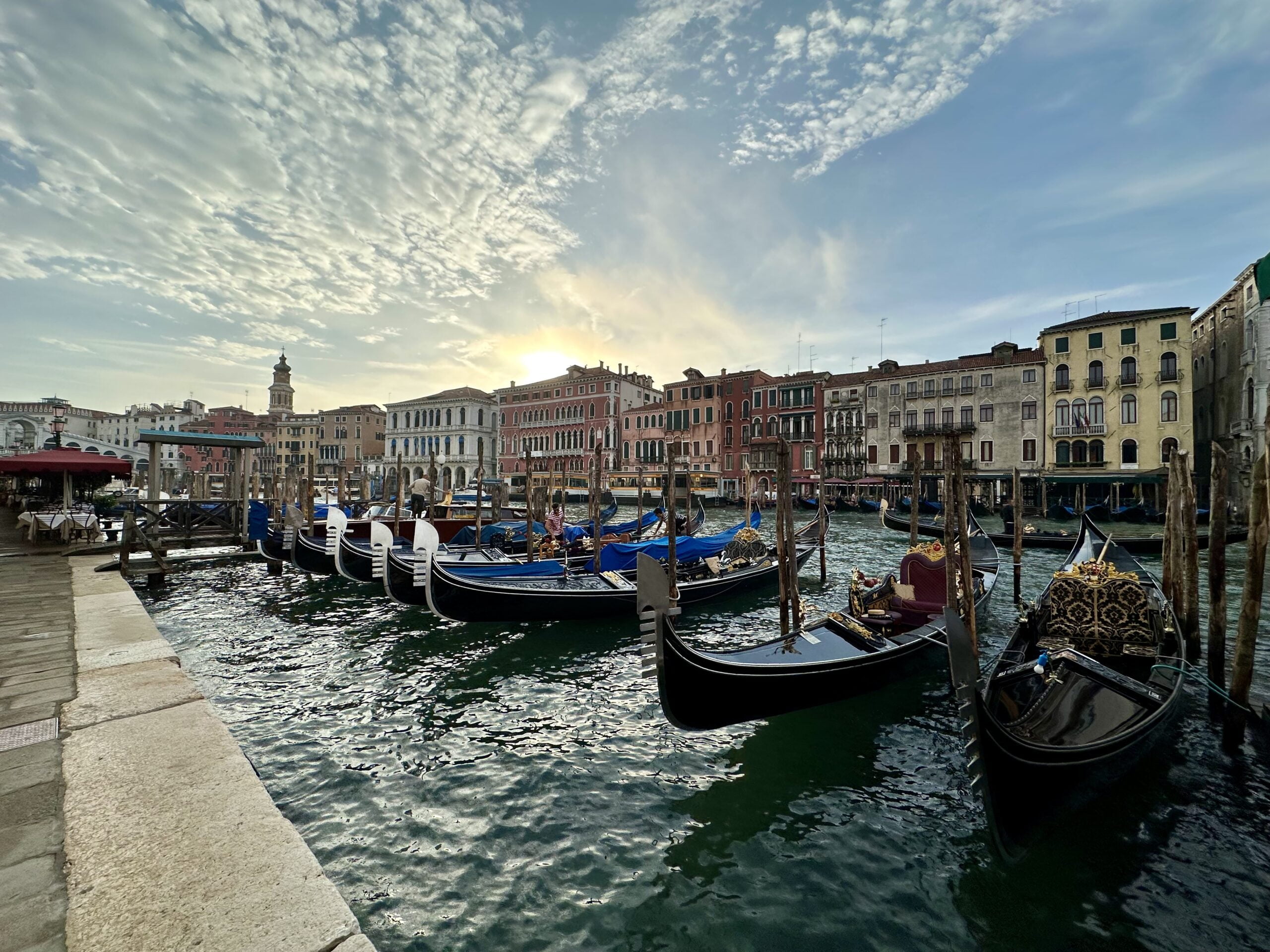An Ageless Destination for Young and Old
Ah, Venice Italy, the City of Love (or at least one of several that claim this designation). One of most iconic and picturesque cities in Italy and a fitting start to our 21-day Italian road trip. The mere mention of the name conjures up vision of romantic gondola rides, the Venetian Carnival and its elaborate masks and gowns, as well as the many delicacies of world-famous Venetian cuisine.
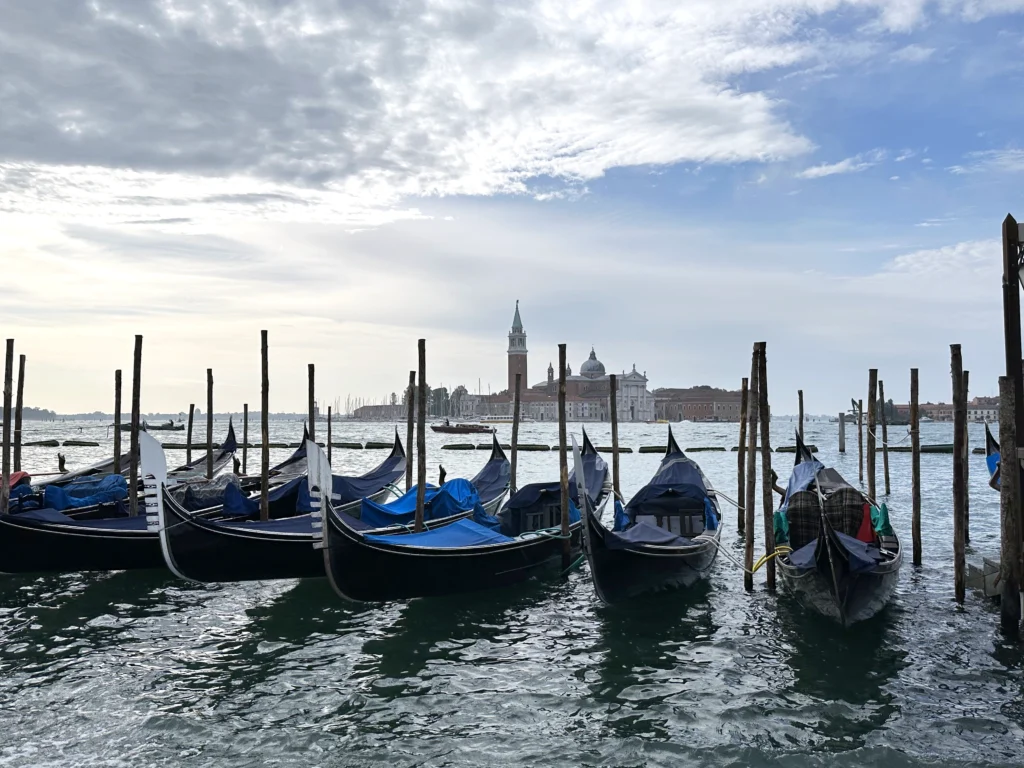
We gave ourselves two days to take in all the sights, realizing from the get-go that it was simply not enough. Not even close. We would be simply scratching the surface of all that Venesia has to offer its millions of visitors. But we wanted an excuse to return again someday in the not too distant future. Hopefully before the city sinks beneath the sea as waters rise and erosion takes its toll.
A Venice Travel Guide
This Venice Travel Guide was written as an overview of our personal experience in the City of Love. The point of view is that of a couple of Boomers visiting the beautiful city of Venice Italy for a romantic event – Our 45th wedding anniversary. We also comment on mobility and food sensitivity issues.
Immerse Yourselves in the History of Venice Italy
As a little background on this historic city, Venice is located in Northeast Italy, in the Veneto region. Although there is no surviving record of the actual date of foundation, Venice was the capital of the Republic of Venice or Venetian Republic from 810 to 1797 AD, after the fall of the roman empire. Furthermore, the first Doge of Venice was elected in 697 AD. Suffices to say it is old. Venice, its lagoon and islands are also a UNESCO World Heritage site.
A few facts about Venice: Many of its buildings date back many centuries. It is constructed on a clutch of 126 islands in the Venice Lagoon and a network of canals crisscrossed by 472 bridges. The oldest is the church of San Giacomo di Rialto, which is believed to have been built on March 25, 421.
Arriving in Venice by the Via della Libertà bridge was easy enough, though great care must be exercised to avoid the infamous autovelox traffic cams. They are often located immediately after a change in speed limit and motorists are often forced to slam on the breaks to adjust their speed. Stay well below the limit to avoid fines.
Parking in Venice
We parked at the Garage San Marco, directly off the bridge as you enter Venice. This parking facility was conveniently located near our hotel, just a few minutes’ walk away. Or so we thought.
This garage is another example of how narrow things are in Italy. Driving up the ramp to the third floor with our DS-7 was a scary experience with only inches separating the walls of the ramp from the fenders of our brand-new car. To fit in the parking spot, we needed to retract the side mirrors (we did this many times during our trips). A smaller car would definitely have been a better choice.
Our Hotel Stay in Venice
Getting to the hotel was also an adventure. What was supposed to be a 2-minute walk turned into a strenuous cardio workout. All the porters at the garage were busy serving other customers. So, I thought, “How hard can it be?”. Turns out, very hard! What I hadn’t counted on was the presence of multiple small bridges with many steps to climb. Lugging two 50 lb suitcases and two carry-ons along the way was quite the workout!
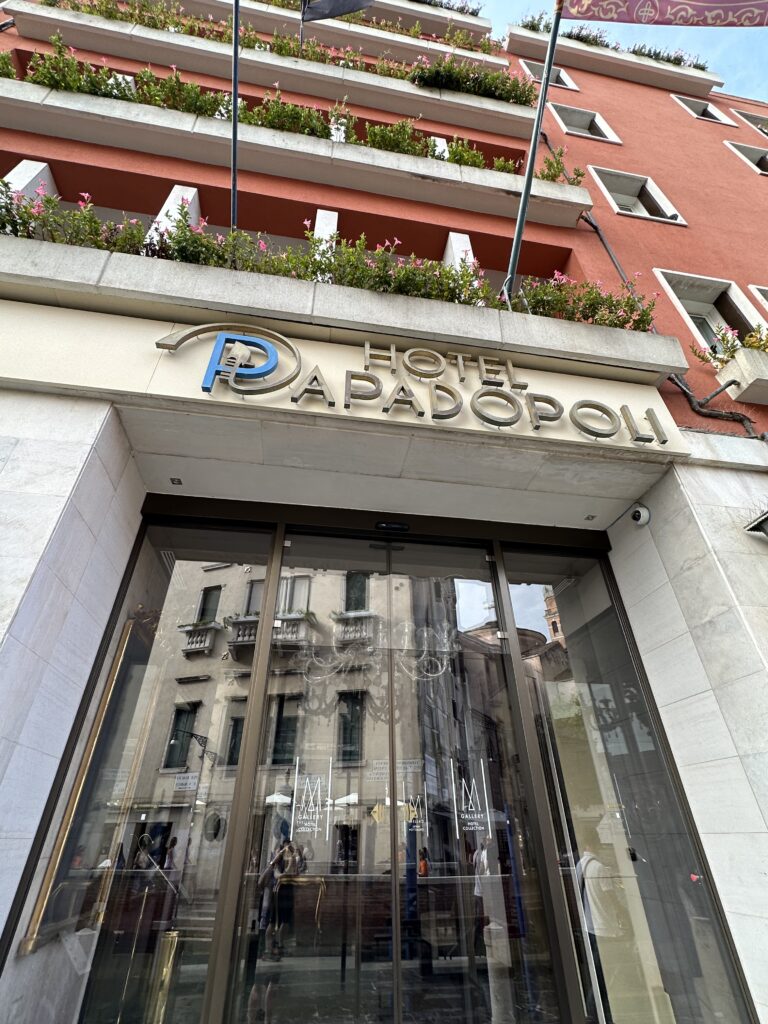


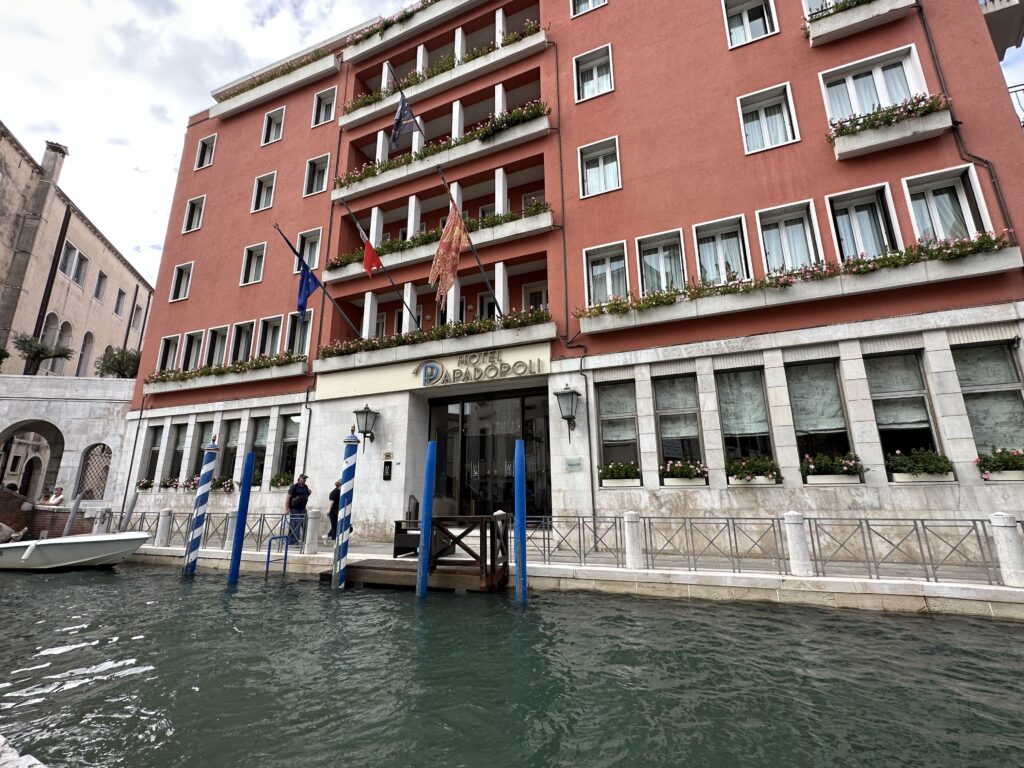
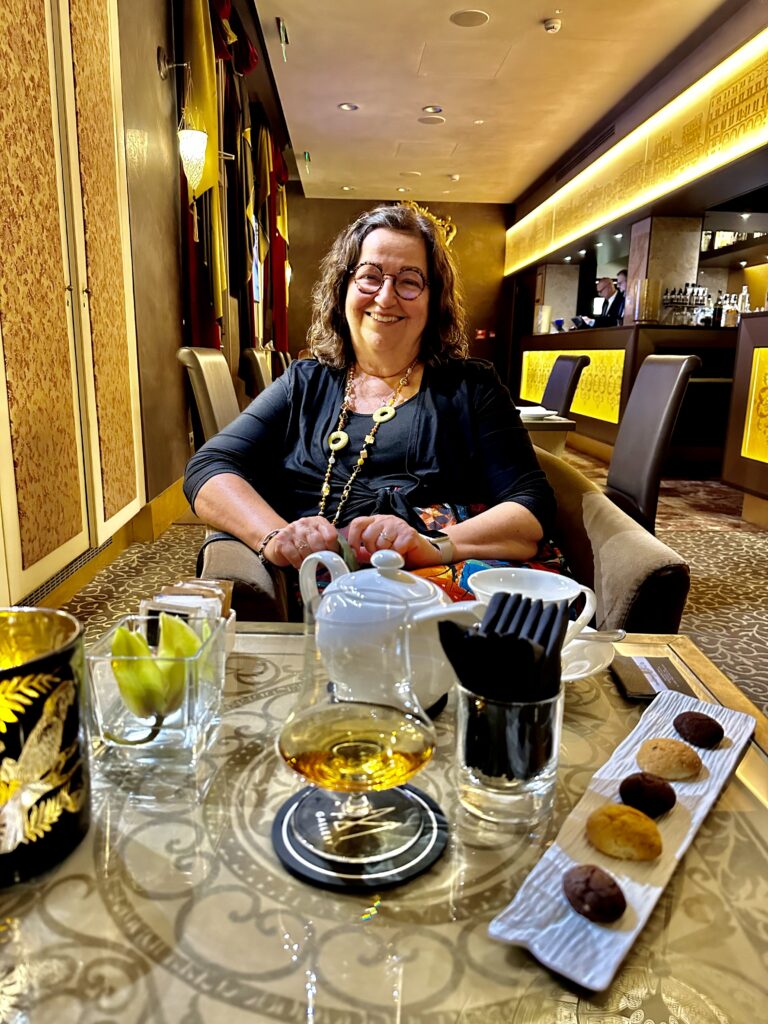
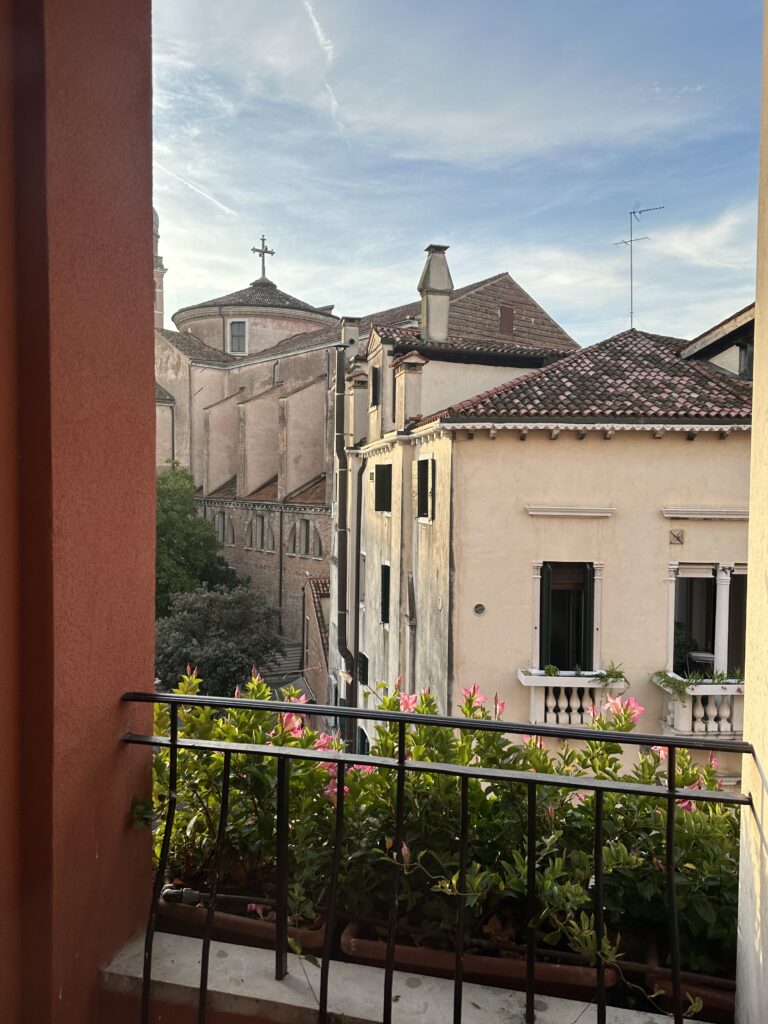
After a nearly half hour of huffing and puffing, and more than a few laughs, we made it to the
M Gallery Hotel Papadopoli, a small but beautiful Renaissance-style boutique hotel offering a splendid view of the surrounding canal and the lush green eponymous park. We later learned that there is a much easier route through Piazzale Roma using a single bridge with a ramp – no stairs – that would have saved us time and precious energy.
Pro Tip
A word of caution for travellers with mobility issues. Though the city is very flat, you’ll need to contend with the bridges. My wife walks with a cane due to painful osteoarthritis in her ankle. She learned firsthand that looks can be deceiving.
The main bridges over the Grand Canal have ramps in addition to steps. The slope is an easier climb. But for the network of smaller bridges that crisscross the maze of Rio found on either side of the main Canals, steps can be quite steep. Plan your itinerary accordingly.
Our room at Hotel Papadopoli was magnificent with a balcony and canal view. Not large, but spacious enough to feel comfortable. We were officially celebrating our 45th wedding anniversary in Venice and I decided to splurge on the Romantic Getaway Package that included rose petals on the bed, a bottle of prosecco, fresh strawberries and a welcome gift. In addition, the room provided some very plush bathrobes.
Must-See Attractions in Venice and the Lagoon
As active seniors, our goal was to focus on the essentials sights and leave the secondary attractions for our next trip. The weather was during our stay was perfect. Venice in autumn is a great time to visit. Venice in autumn is a great time to visit. The official tourism season draws to a close, with less congestion than in summer. There is more time to admire the architecture in the historic centre and visit the lagoon area.
The Iconic Rialto Bridge
The Rialto is the oldest stone bridge in Venezia spanning the Grand Canal and in recent years, has become a major tourist attraction. Completed in 1591, it is now home to a litany of shops and boutiques, in some ways imitating the Ponte Vecchio in Florence.
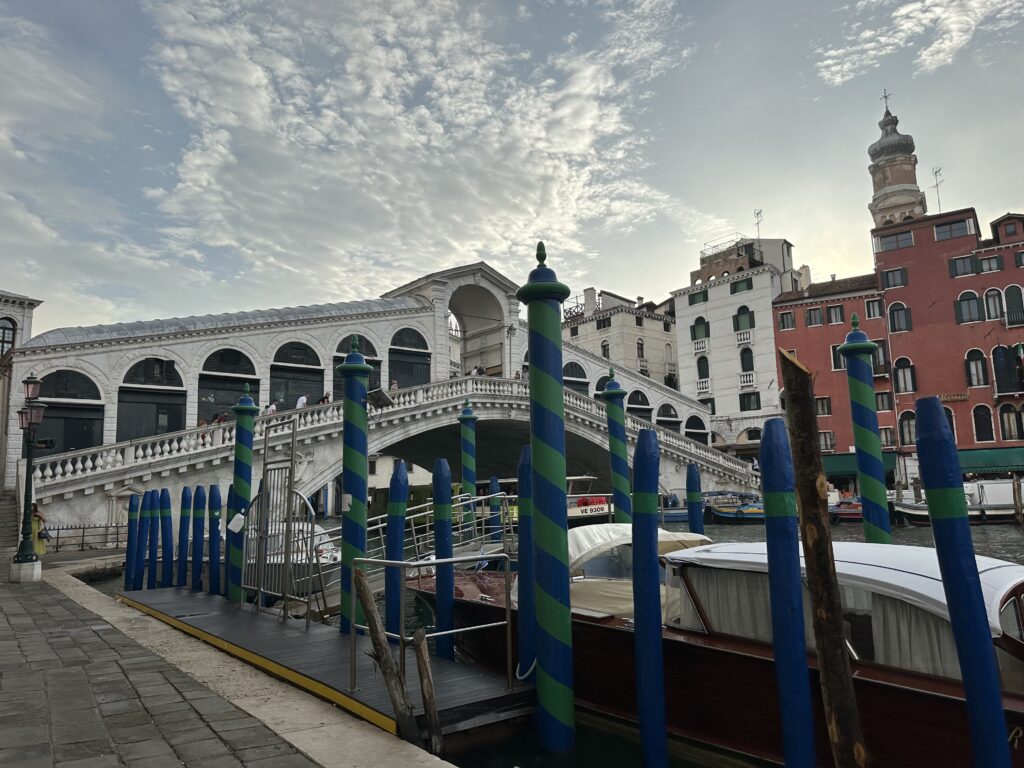
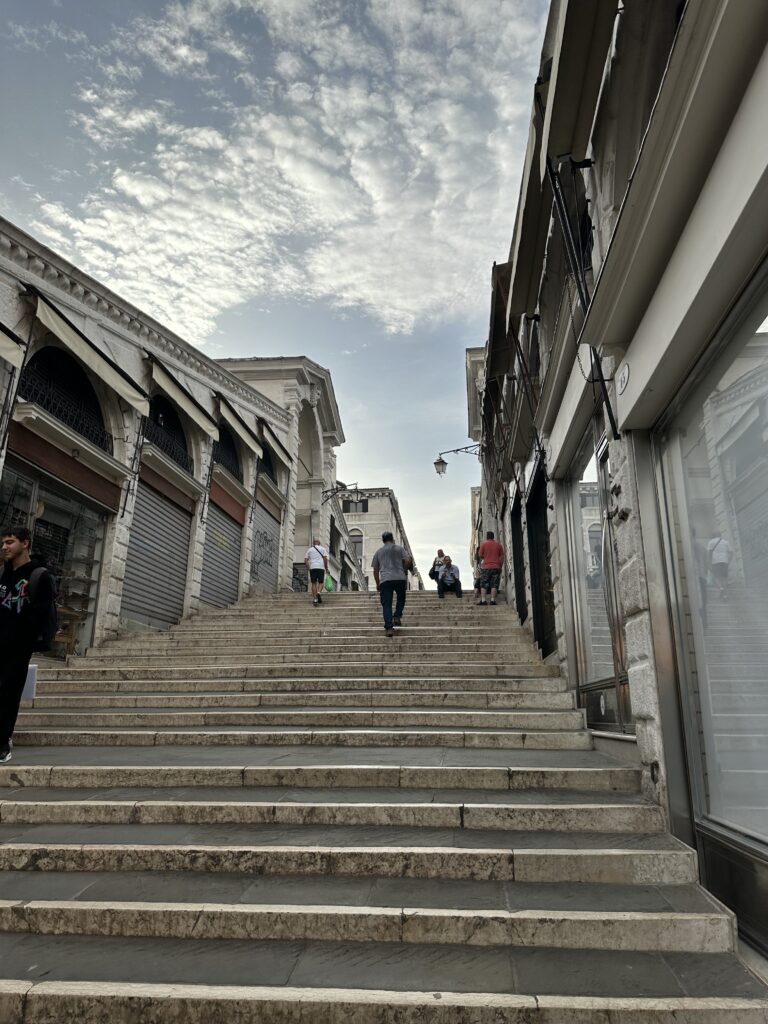
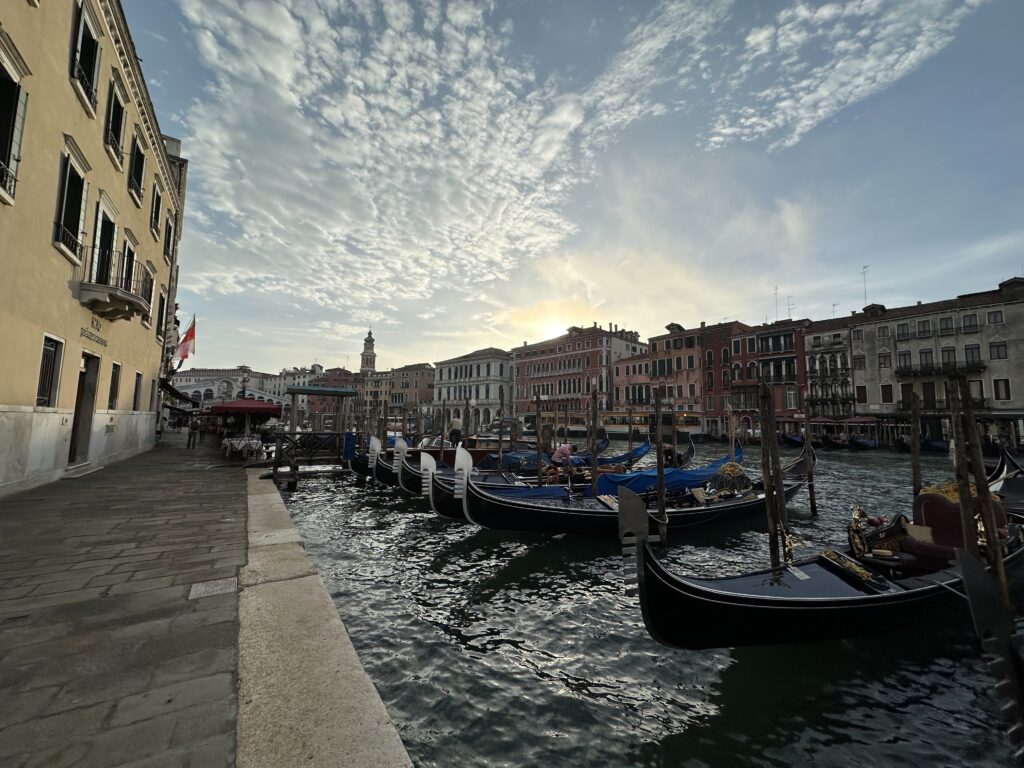
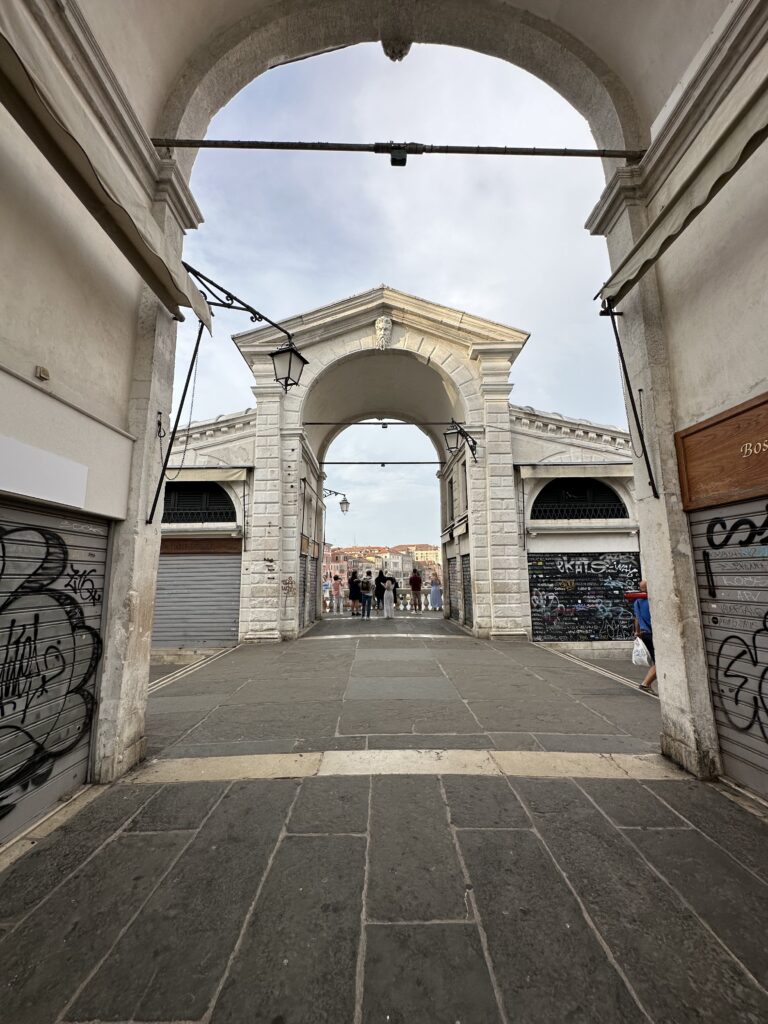
The shops on this Venice landmark are so densely packed on either side of the bridge that you lose the sense that you are actually on a bridge. It is only when you venture to either side of the Rialto that you’re able to witness the Grand Canal and its bustling activity unfolding before your eyes. It is truly a surreal experience. Of note in the various boutiques around Venice is the presence of two ubiquitous items: Venetian carnival masks and Murano glassware. But are beautiful, fragile and expensive.
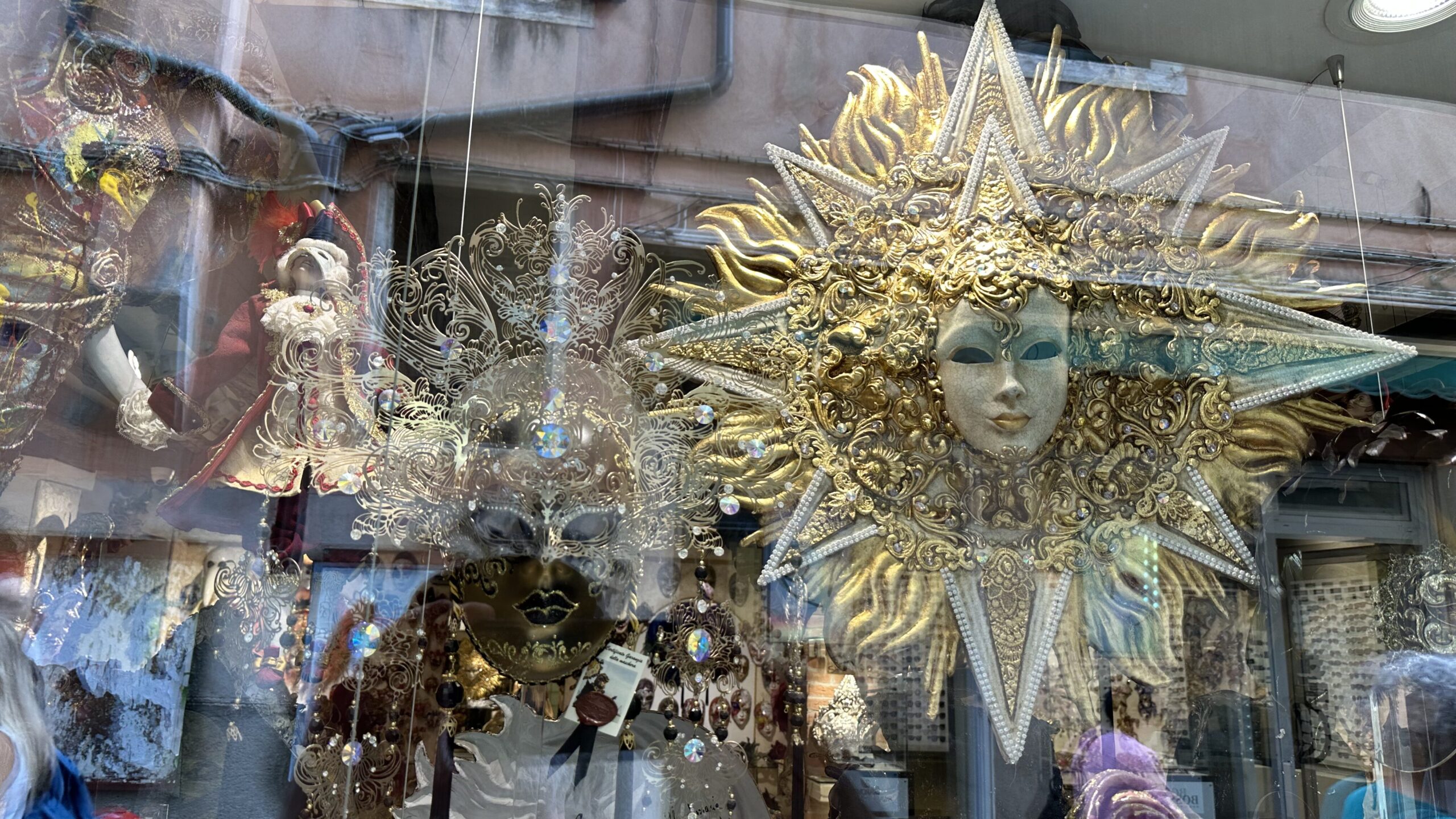
The Grand Canal
The first thing you notice about Venice is how wide an open it feels. Buildings are low, no more than a few stories. The Grand Canal, Venice’s main thoroughfare and one of the city’s most famous icons contributes to this feeling of openness. The Canal is bordered on either side by expansive fondamenta teeming with visitors from everywhere around the world. There is a lot of foot traffic on the fondamenta, but you rarely feel oppressed. In fact, the crowds contribute to the magic of the city and its canals.
The amount of water traffic on the Grand Canal is also impressive. It is constantly plied by all manner of watercraft including the vaporetto (a form of water bus), water taxis, and of course the iconic gondolas.

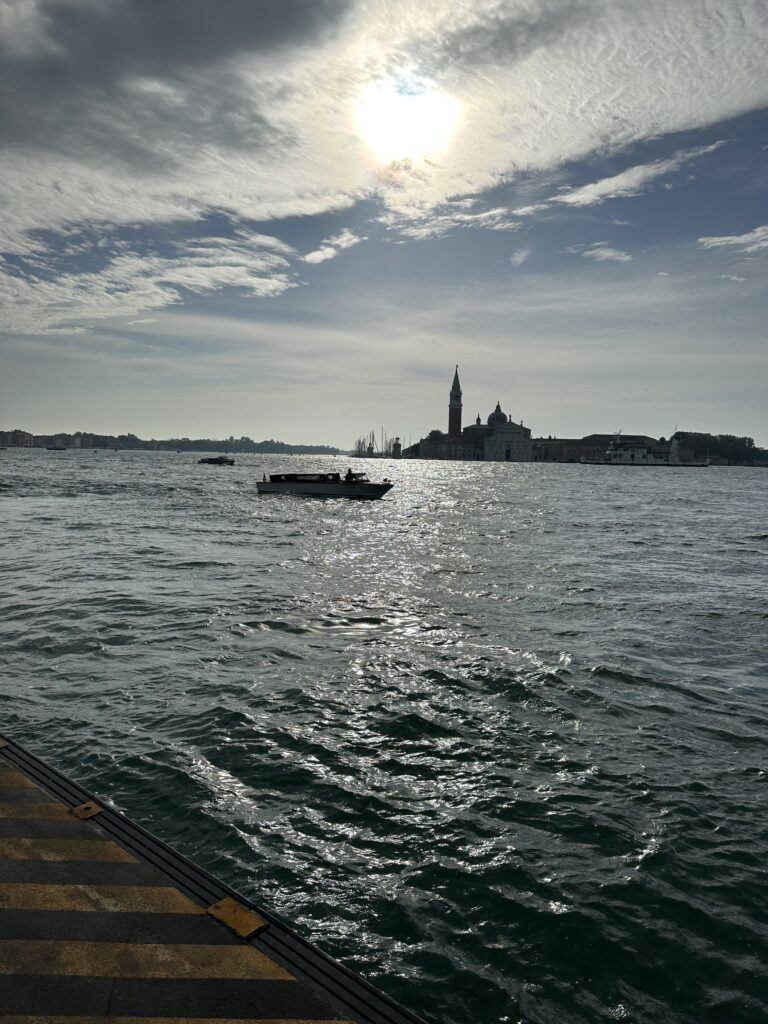
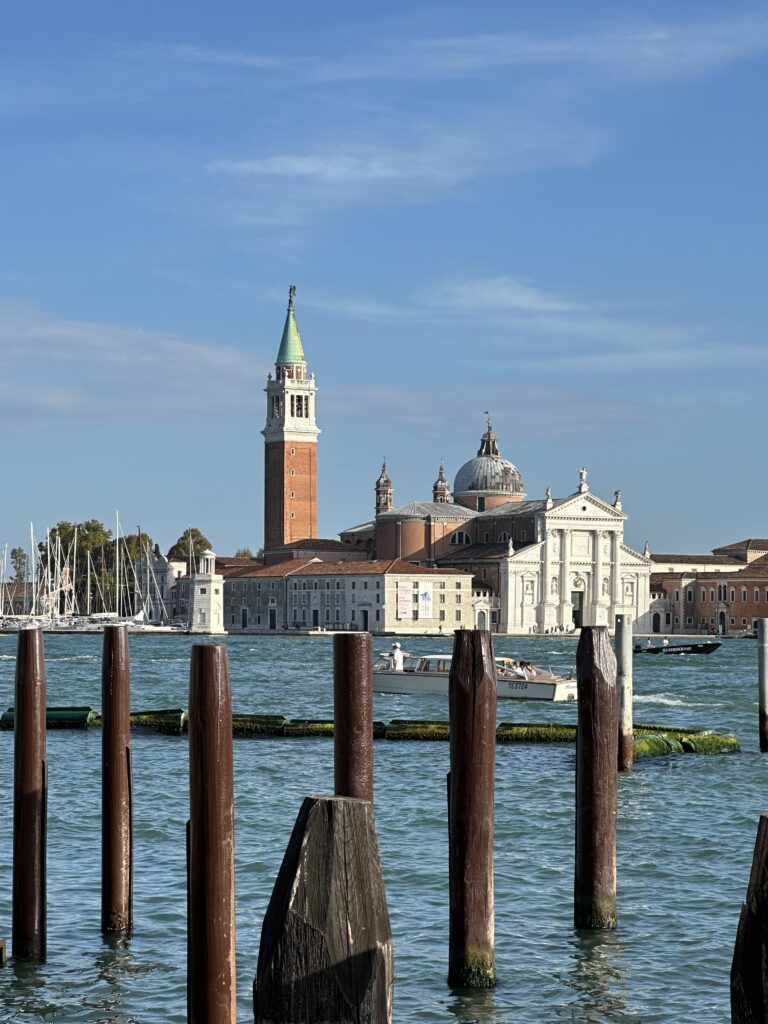
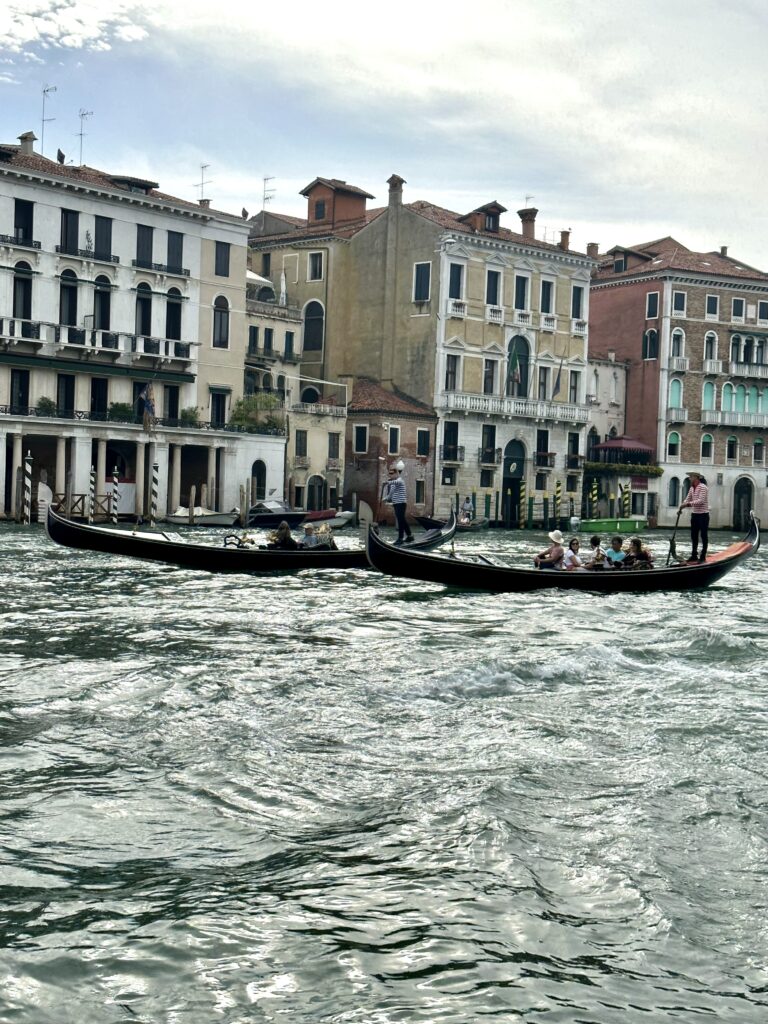
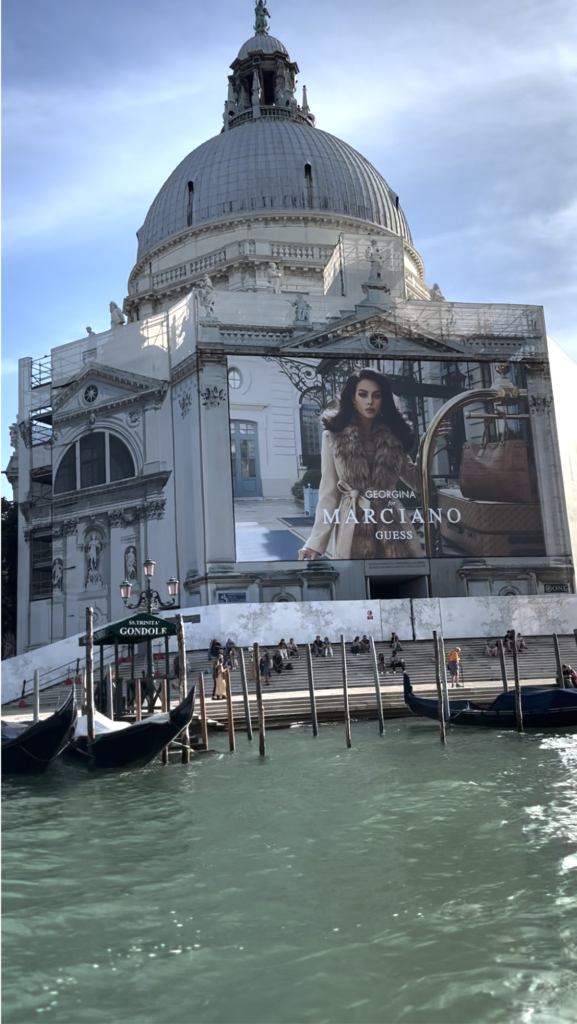

We couldn’t help but notice how the wake left by passing canal boats crashed against the walls of the canal. The waters are far from calm. Those who are prone to seasickness should keep this in mind before boarding any form of watercraft. That being said, the Grand Canal is a wonderful way to discover key landmarks of Venice as it slowly snakes through the city.
Piazza San Marco
A trip to Venice would not be complete without visiting Piazza San Marco (Saint Mark’s Square). The most celebrated location in Venice is well worth the trip (about 30 minutes on foot from Piazzale Roma).
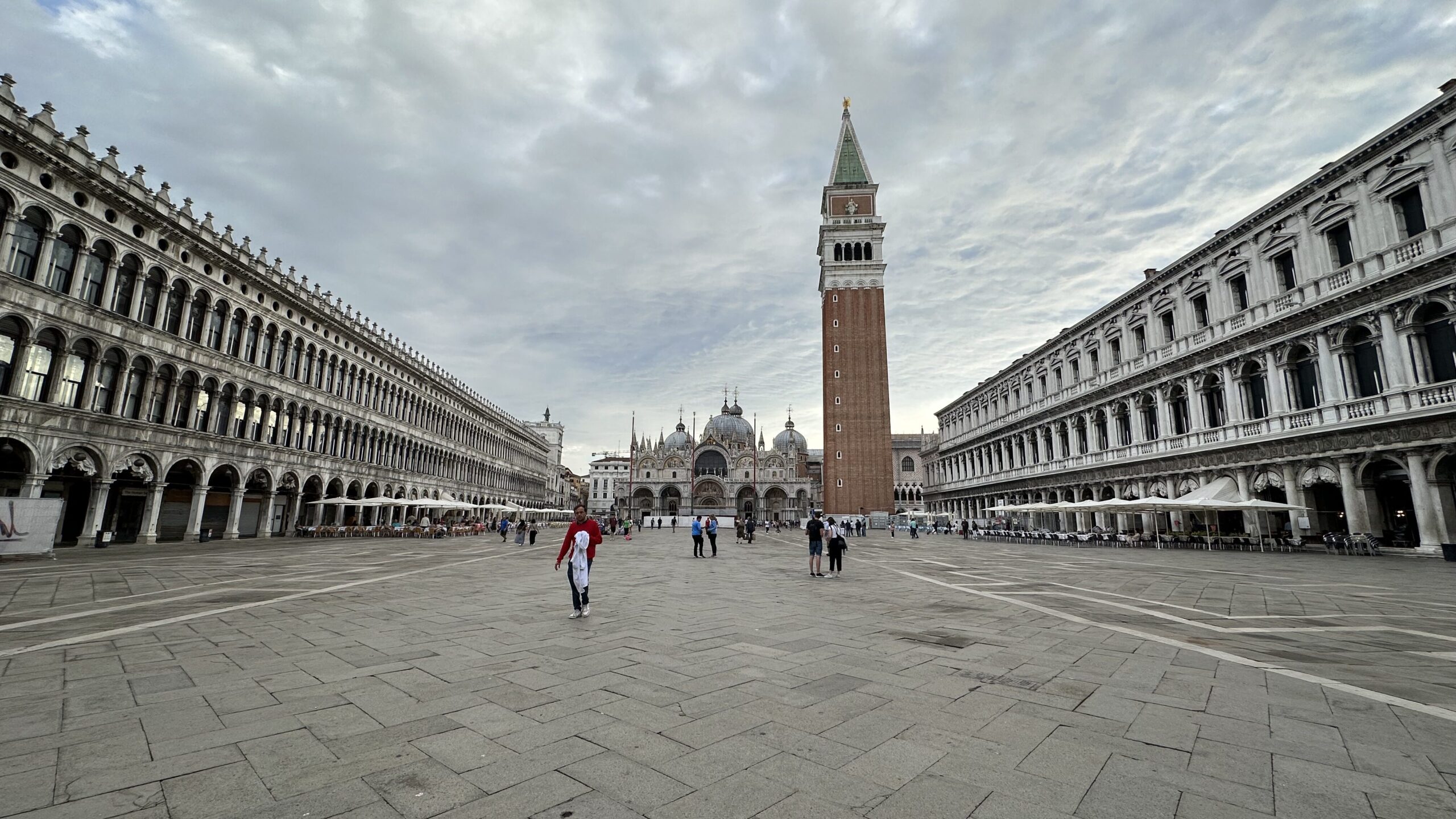
This sprawling plaza packs into one single area some of the most iconic buildings and scenes in Venice. The Doges Palace, Saint Mark’s Basilica, the Porta della Carta, The Pallazo Ducale, the beautiful Ponte della Paglia and nearby the Bridge of Sighs – all perfect examples of Venetian architecture. Not to mention the docks and Riva degli Schiavoni along the Grand Canal, with a famous view of the Church of San Giorgio Maggiore.
At the time of our visit, various structures in Piazza San Marco were undergoing restoration. So, our images are less than postcard picture perfect. In addition, souvenir vendors have encroached on the piazza with their mishmash of pseudo-venetian trinkets and trash made in China. What a shame!
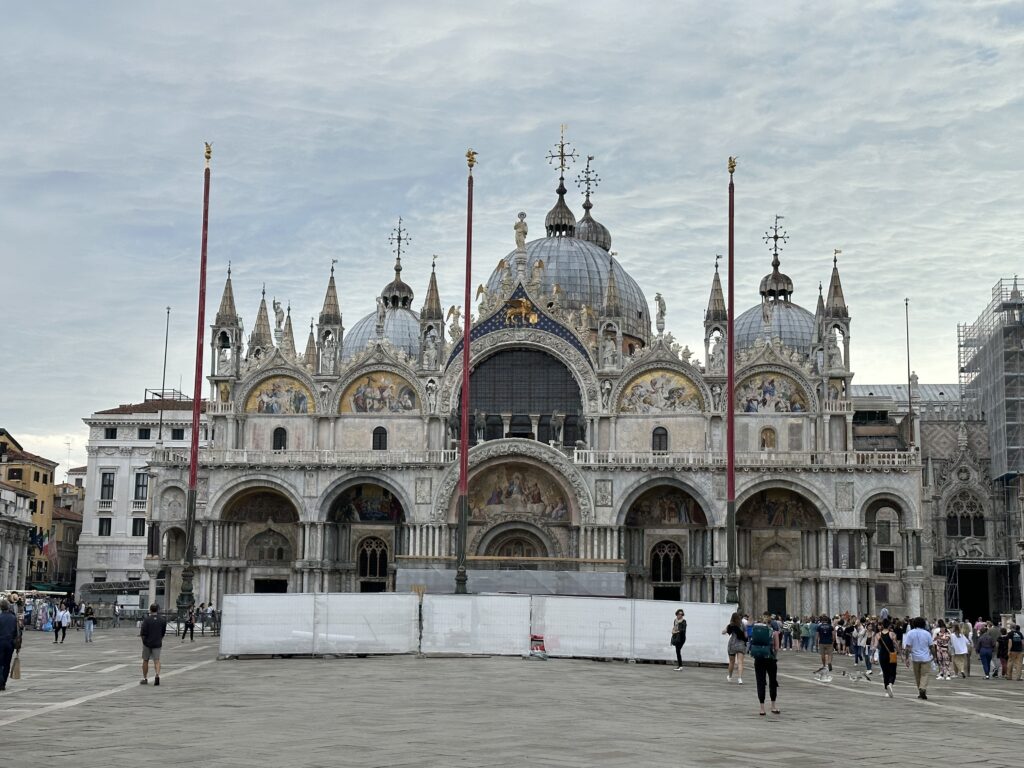
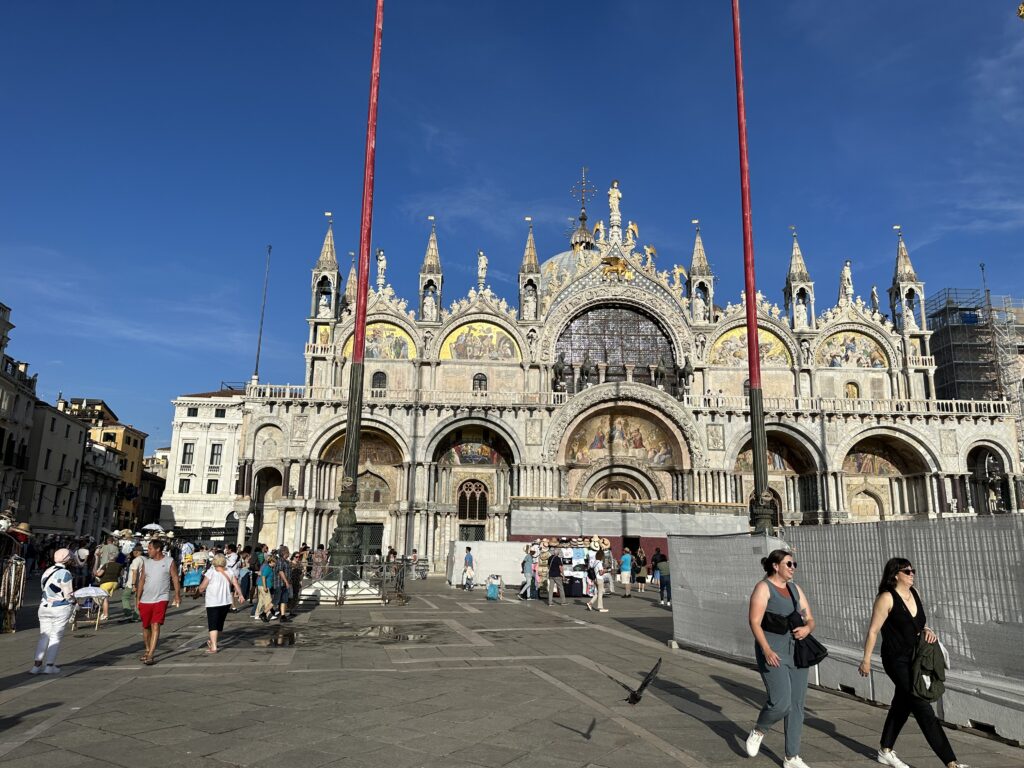
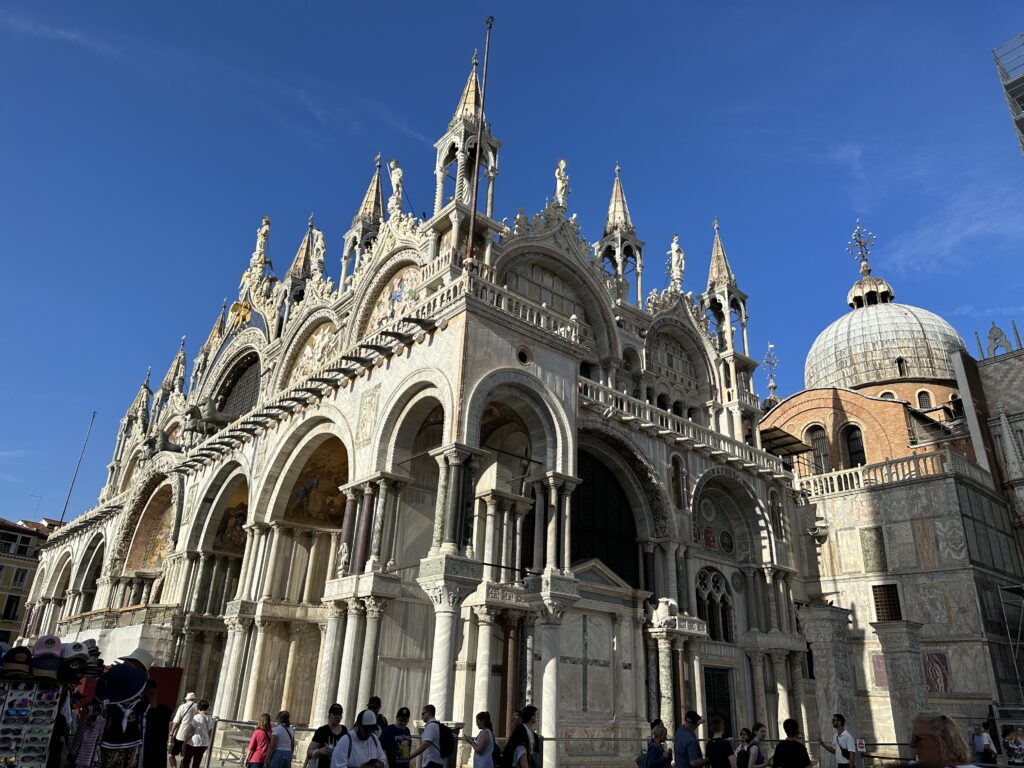





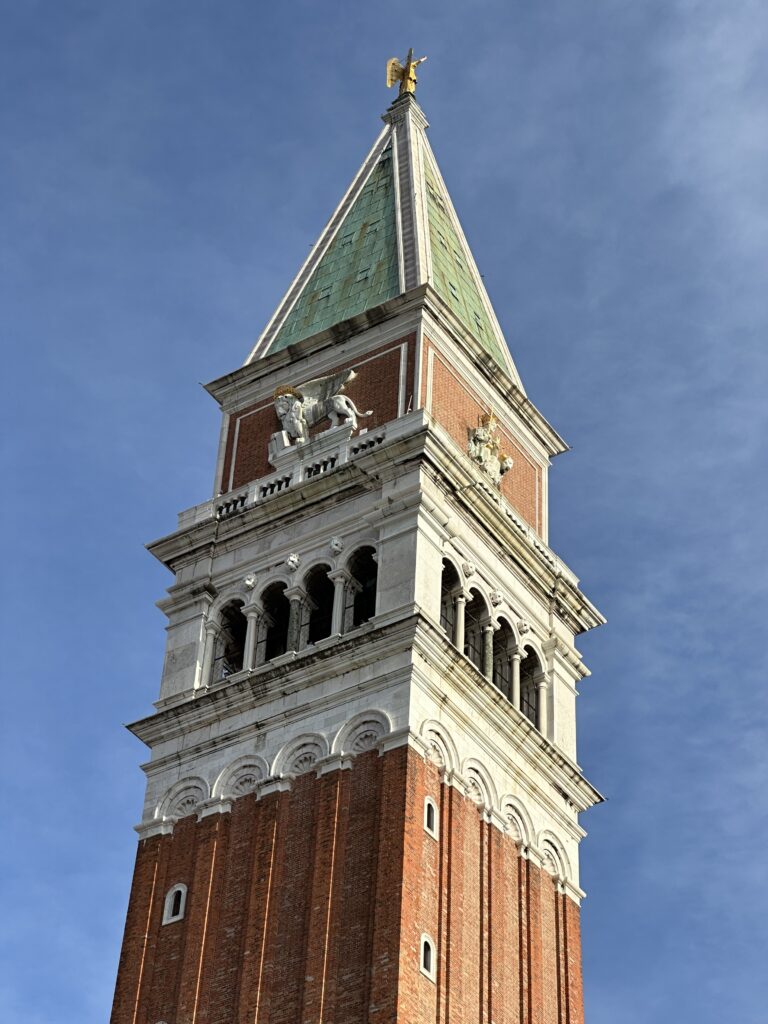
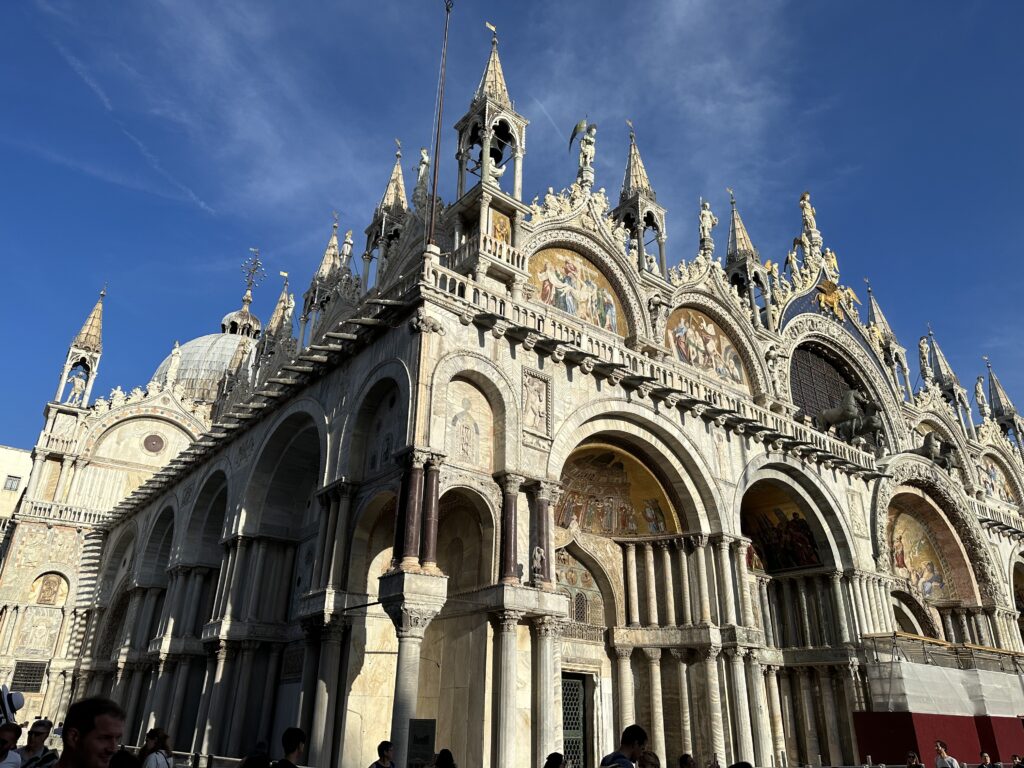
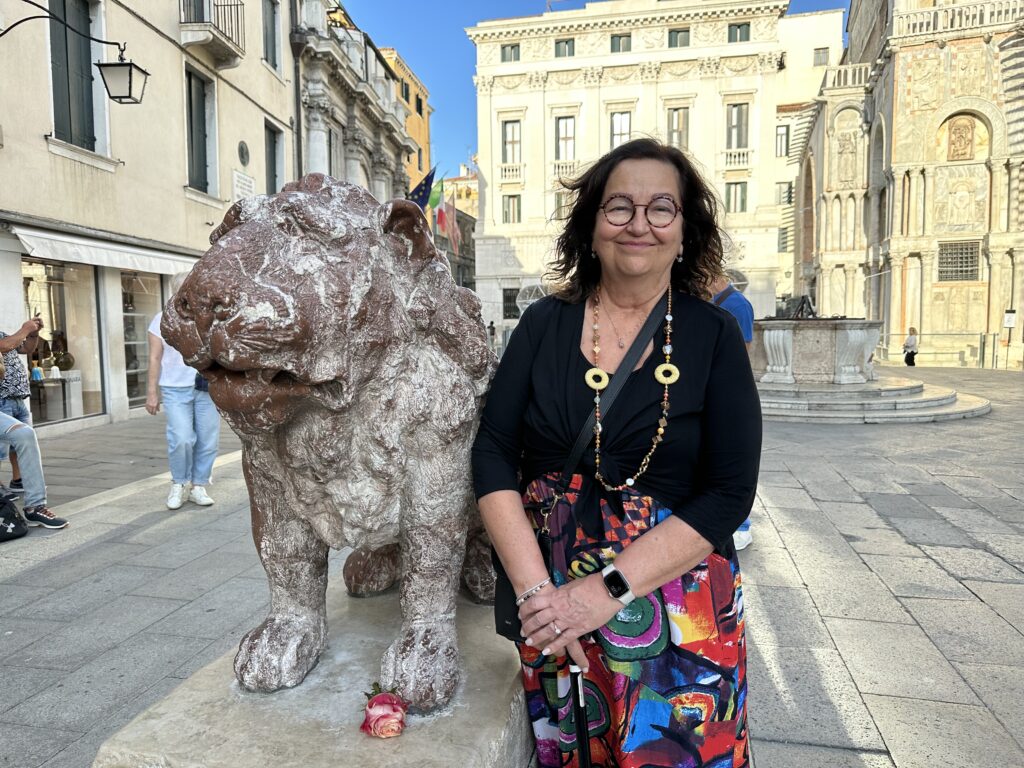


The Piazza is home to hundreds of pigeons to the joy of little kids, dogs and the young at heart who joyfully chase them across the paved courtyard. The spectacle can be witnessed from a front row seat at the many restaurants and cafes that line the western side, serving up pricy caffè e brioche (espresso and croissants) in the morning, and aperitivo in late afternoon. We sampled both and found that the atmosphere of San Marco made them much more appealing. The ambience was further amplified by several bands playing live music, sometimes jazz, sometimes classical, always uplifting.
A Note about Acqua Alta
Anyone who has been researching Venice has seen images of flooding in Piazza San Marco circulating on Instagram and other social channels. While planning our trip, many of our friends were alarmed that Venice had begun to sink below the waters of the Lagoon.
Flooding does occasionally occur as a result of a natural phenomenon call Aqua Alta meaning “high water” in Italian. This seasonal flooding is the result of a combination of factors including astronomical tides, strong sirocco winds and conditions in the Adriatic. These forces push water into the Venetian Lagoon causing parts of the city to flood including Piazza San Marco.
The images circulating in social media are from the record Aqua Alta of November 2019, when Venice experienced the highest tides in 50 years. This is not commonplace. Acqua Alta conditions can occur between late September and April, most commonly in October, November, and December. Saint Marks was bone dry during our visit in late September!
Getting Around in Venice
The Vaporetto make multiple stops along the way so you can hop off at key areas of the city. This is convenient if you’re taking in the sights. But is you’re in a hurry to get back to your hotel, walking is faster.
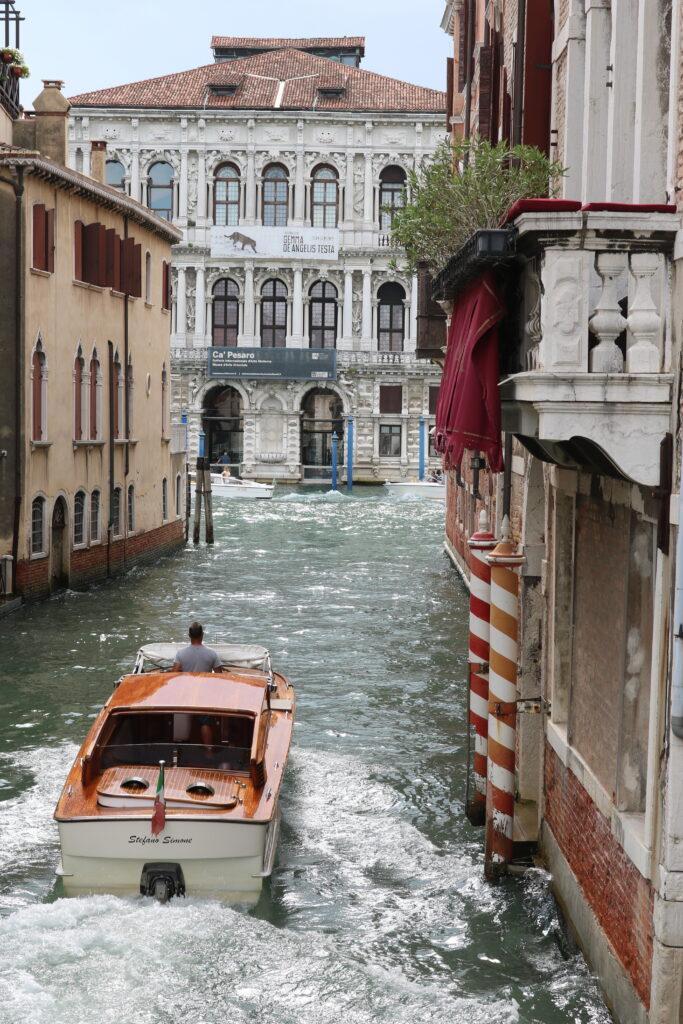
If you have a healthy travel budget, and are looking for a luxurious experience, a water taxi is a great choice. A water taxi is a beautifully elegant, generally wooden powerboat, akin to luxurious limousine. These private craft allow you to travel the Canals and Rio with class and style. A typical ride will cost you 70€ for a 15-20 minute ride.
A gondola ride will set you back a lot more. Several hundred Euros per party for a short ride. Keep in mind that a gondola is not actually a mode of transportation in Venice. You can’t take a gondola from point A to point B. They have a pre-determined route that they follow and leave from various locations throughout the city.
Choose your departure point wisely to ensure that the sights meet your expectations. And don’t expect the gondoliers to be dressed like in the movies with the straw hat and striped shirt.
Only a few of them bother to dress in the traditional style. If this is important to you, specify your requirement when booking. We even saw one casually talking away on his cellphone with passengers on board. Not a great experience.
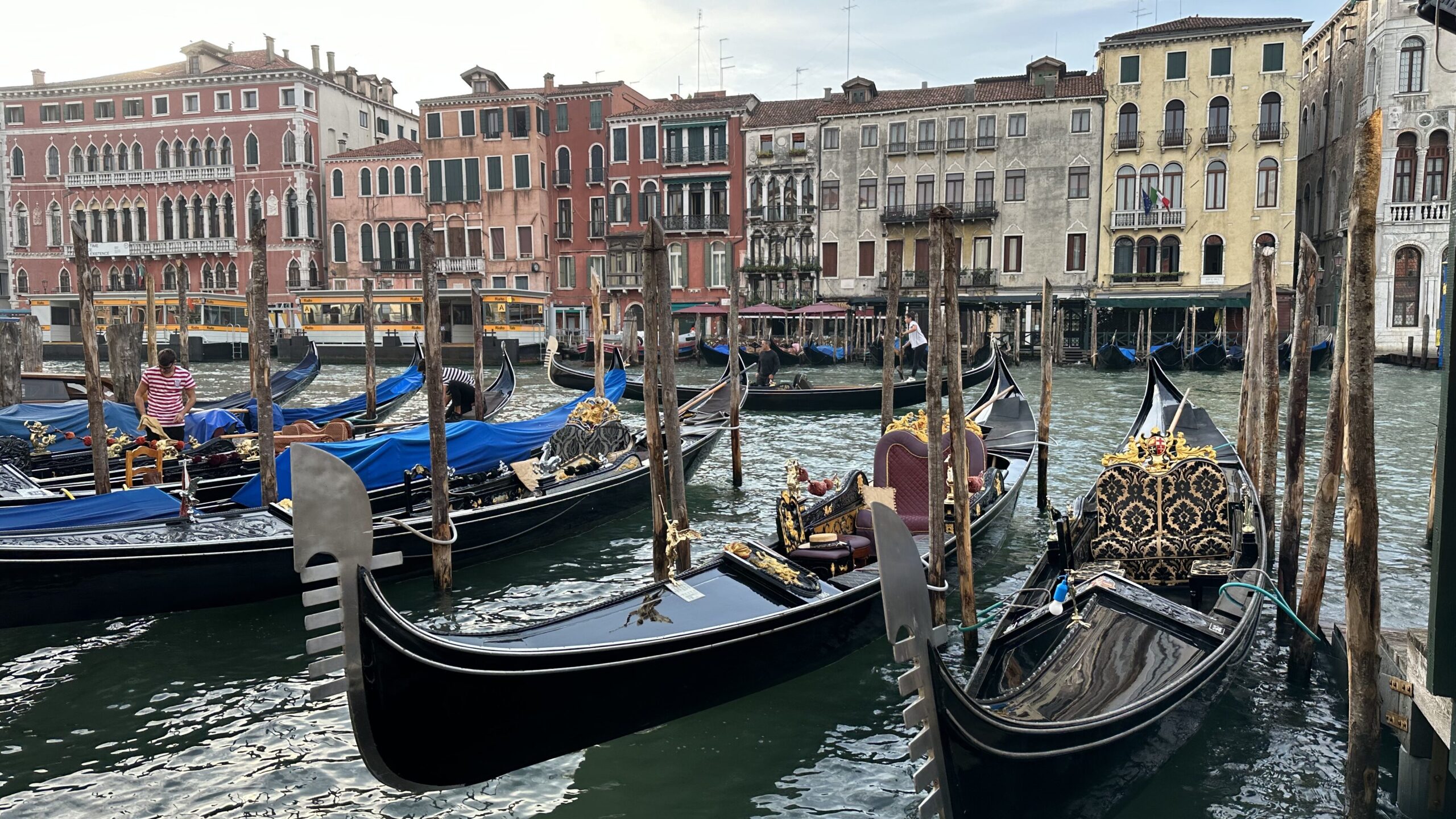
On foot – The Narrow Streets of Venice
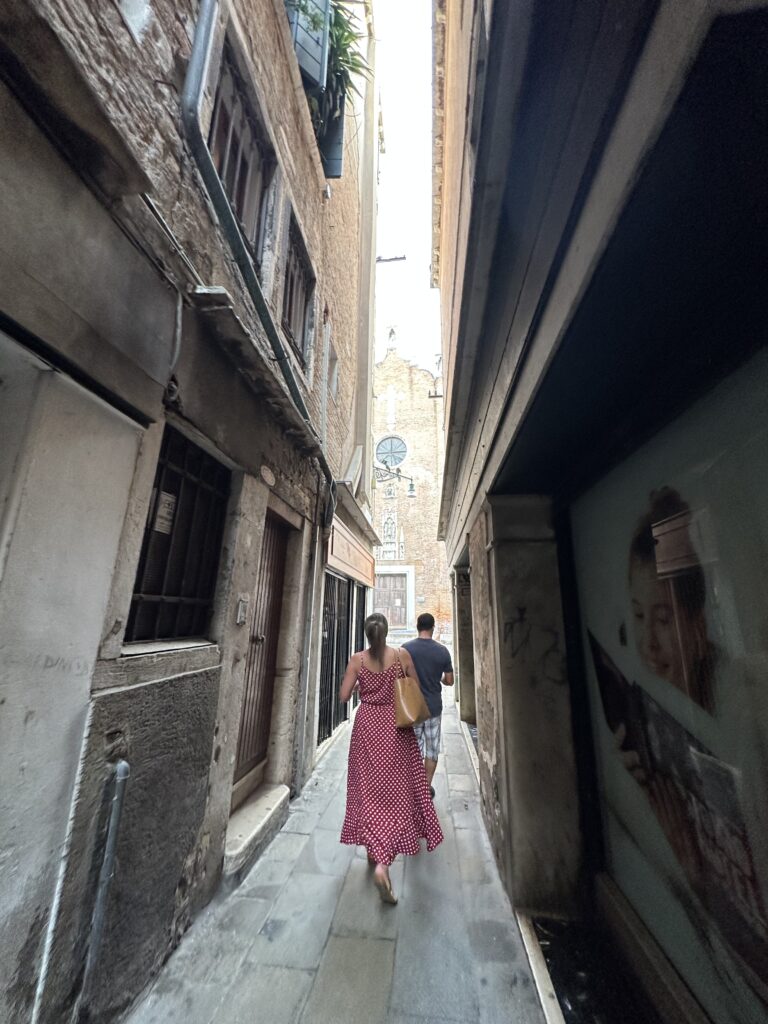
We often picture Venice as a city of canals and don’t fully understand that Venice is also laid out in a dense maze of narrow streets, some only as wide as a typical urban sidewalk. With your arms outstretched you can almost touch both sides.
Finding your way can be tricky. Google Maps is not very accurate in Venice and is often thrown off by the buildings on either side which interfere with the GPS on your phone. We found ourselves backtracking more than once when Google Maps finally “caught up” with our location.
These narrow streets are sometimes mysterious, and sometimes creepy. In particular the sotoportego, which are narrow alleys that run directly under buildings and can be rather dark. Since they are usually quite short, a few hundred meters in length at most, you find yourself constantly changing direction, zigzagging your way across Venice to reach your destination.
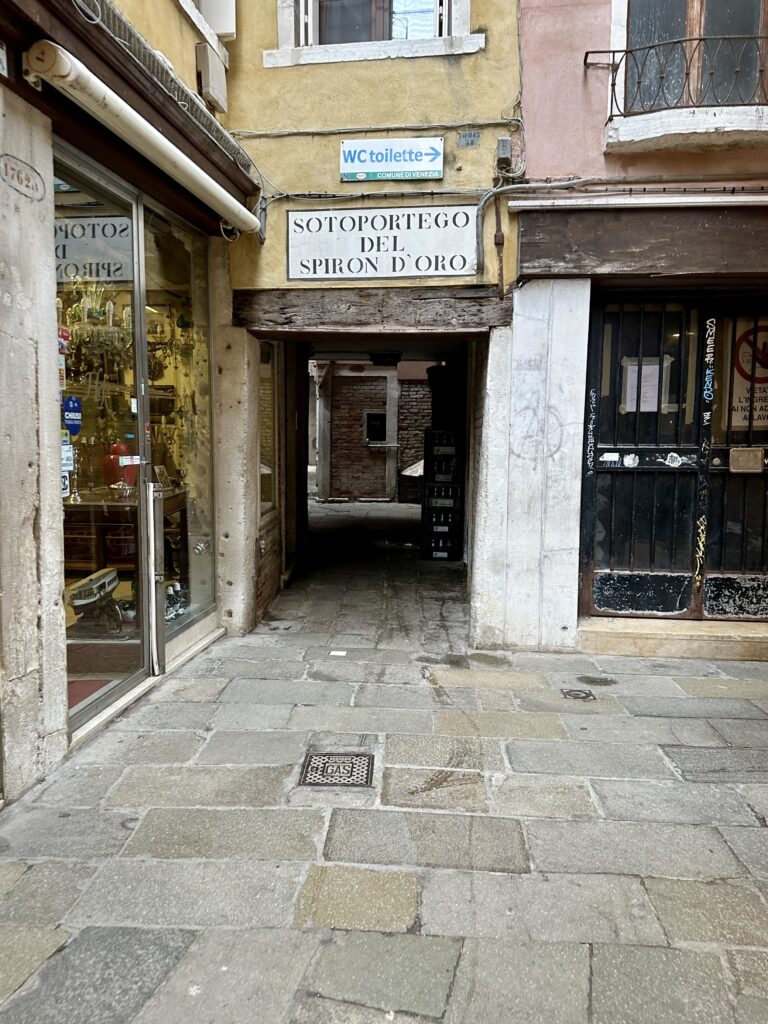
One way to determine if you’re headed in the right direction are the nizioleti (which means sheet in the Venetian dialect). These are painted signs on the walls indicating the street and alley name as well as the direction of main points of interest such as Piazza San Marco and the Rialto Bridge.
But these typical narrow streets add to the charm and unique atmosphere of Venice. They are an integral part of the adventure in the city like none other. To learn more about the various Venetian street names, read this short post.
Dining in the Venice, City of love
Venice is a great place to dine on fresh fish and seafood. The islands is located directly on the Adriatic with easy access to the freshest catches imaginable. The Laguna Veneta or Venetian Lagoon also provides one of the most ecologically rich and diverse bodies of water in the Mediterranean. The lagoon is a preferred location for fish farming or vallicultura and has been for centuries. Everything is so fresh that shrimp are often served raw in many restaurants.

Antica Trattoria Poste Vicie
Antica Trattoria Poste Vecie, Venice, combines fresh seafood and historical ambiance in a 16th-century setting, offering a rich Venetian culinary experience near the Rialto Market.
Ristorante Vecia Cavàna
Ristorante Vecia Cavàna in Venice offers a delightful dining experience with its seafood and gluten-free options. Highlights include truffle antipasti, wild duck ragout, and a mixed grilled fish platter.

Restaurants procure their fish, shrimps and prawns, octopus and shellfish from the Rialto fish market, an open-air agglomeration of stalls, located a stone’s throw away from the famous Rialto bridge. Early each morning, chefs haggle with merchants to get the best deals and compete for the freshest and most prized ingredients. Produce vendors are also present, providing a one-stop-shop for local restaurateurs and local residents.

Pro tip
It is strongly advisable to book your dining reservations well in advance to avoid disappointment. This is true with most major cities and popular destinations in Italy. The nights where we decided to be spontaneous yielded a mixed bag of delightful discoveries and disastrous disappointments.
Our two restaurants of choice while in Venice were recommended by the hotel concierge among a half-dozen suggested. It took us several hours to comb through the online menus of each restaurant to finally settle on what were two truly impressive choices.
Venice Summary
Travel experts agree that the fall is the perfect time to visit Venice, the City of Love. It provides the perfect backdrop of magic and romance for a memorable getaway with your partner or spouse. Though it is heavily skewed to high-volume tourism, there is an opportunity to find the real Venice, if you know where to look. Although the main attractions are a must, exploring the backstreets will give you a greater sense of the history, culture and architecture of this iconic floating city.
